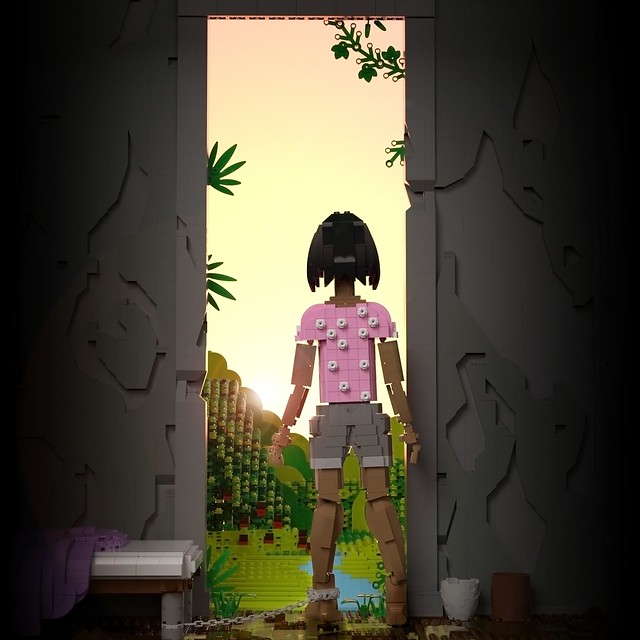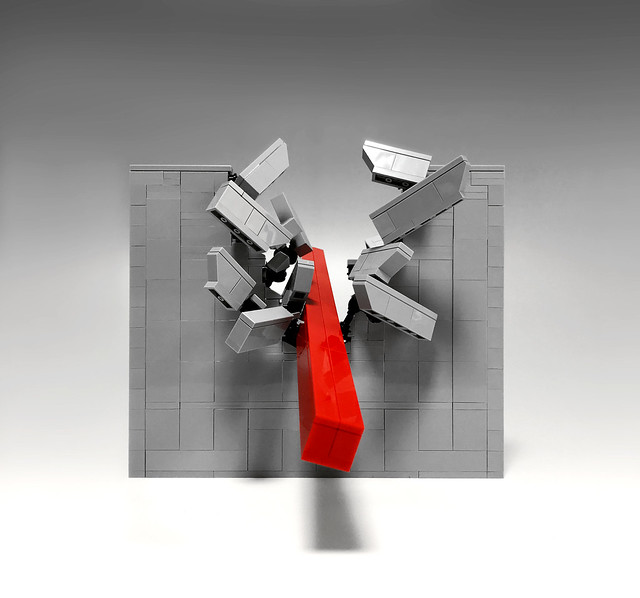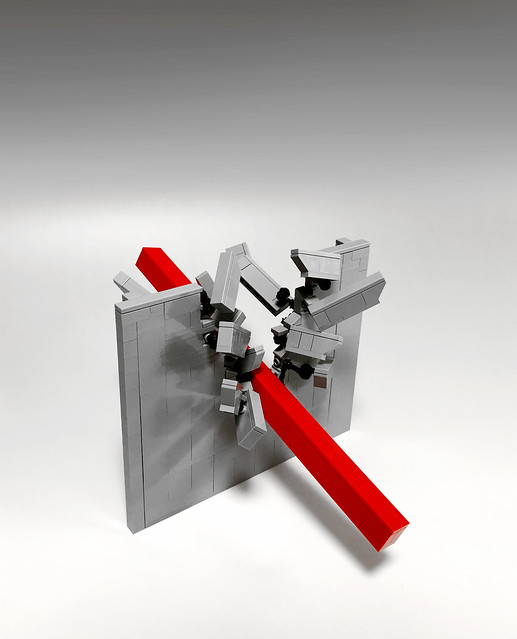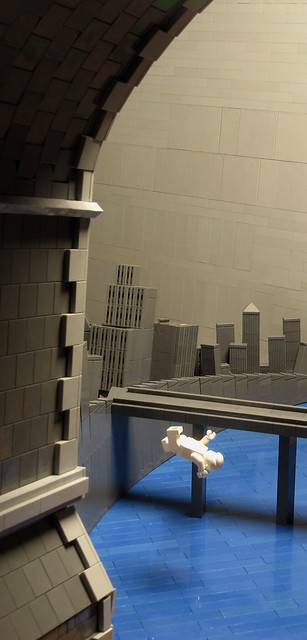When building with LEGO bricks, most people opt for recreating something that mirrors our experiences. We draw inspiration from the real world — maybe we look to movies, literature, or some other media, but our creations look like things that exist…or could possibly exist…in our reality. What, then, should we make of the artistic abstractions of Crimso Giger? Even though they exist as physical models, these spaces are like nothing we’d expect to encounter. Crimso has combined geometric abstraction with sculpture, leading us into an unfamiliar world without giving us a roadmap.
Sure, you can try and make sense of these images by trying to force some sort of logic onto them. Take Abstract – Yellow Grey Black, for example. The choice of colors and shapes reminds me of the interior of a computer, or a cityscape that’s been bent like a scene from Inception or Doctor Strange. But that’s just my perspective – maybe this is something else entirely.

Abstract – White Black Red makes me think of gaming. The red and black tiles seem to form a checkerboard, and the black and white groupings remind me of backgammon boards and dice. But what is that construction in the center? Is the “x” shape in the 1x6x5 rectangular girder a call out to Tic-Tac-Toe? Have I completely missed the point? I just don’t know!
Continue reading →
The Brothers Brick is funded by our readers and the community. Articles may include affiliate links, and when you purchase products from those links, TBB may earn a commission that helps support the site.













